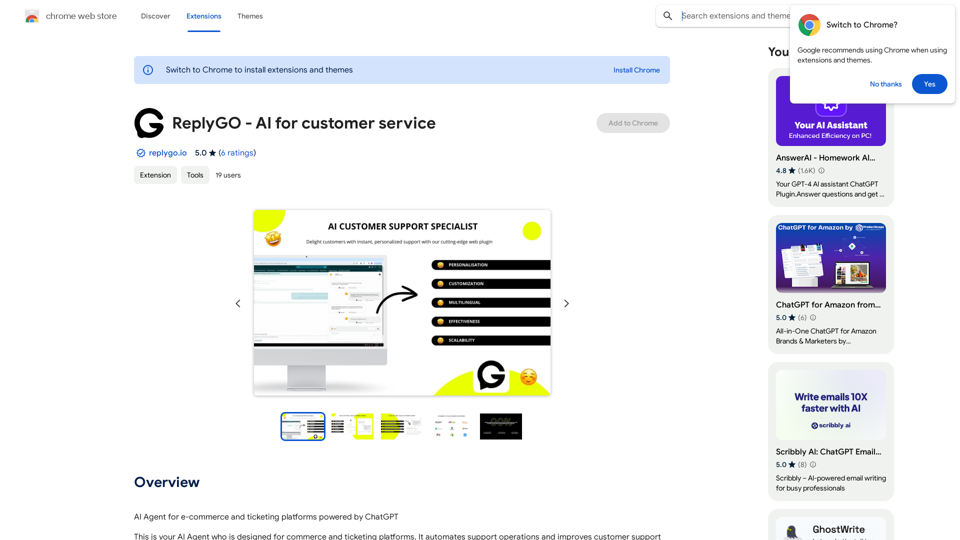Verifee is an AI-powered tool designed to assess the credibility of articles on Czech news websites. It helps readers navigate the vast sea of online information by providing warnings for articles written in styles typical of unreliable media sources. Verifee aims to promote critical thinking and informed decision-making among its users.
Verify
Verify is a tool that uses artificial intelligence to determine the trustworthiness of articles on Czech news websites.
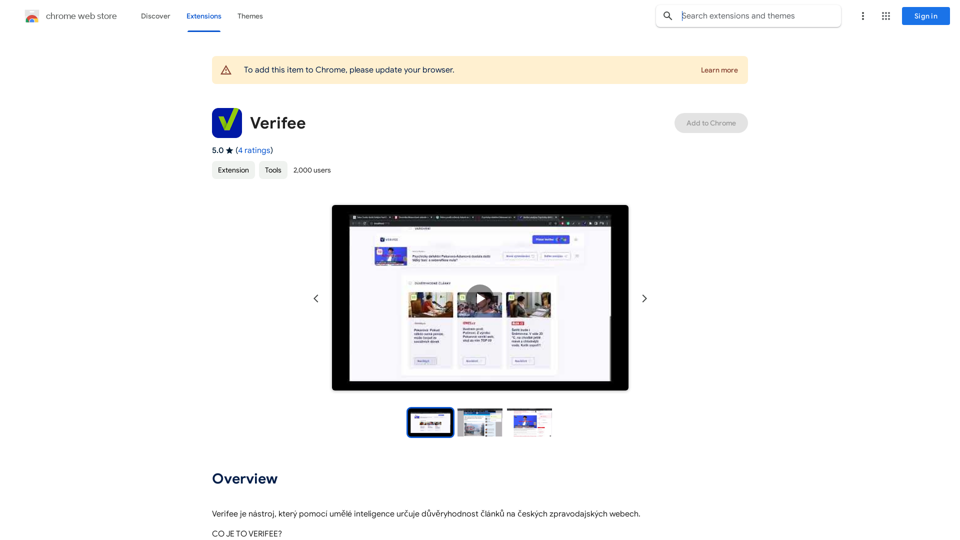
Introduction
Feature
Browser Extension and Web Application
Verifee offers two convenient ways to use its services:
- Browser extension: Always available, automatically displays warning icons next to news articles
- Web application: Allows analysis of any article without installation
Credibility Scoring System
- Assigns a credibility score to each analyzed article
- Provides immediate indication of content reliability
- Helps users quickly identify potentially unreliable information
Detailed Analysis Results
- Offers in-depth analysis of articles
- Enables users to critically evaluate content
- Supports informed decision-making
Non-Intrusive Design
- Operates quietly in the background
- Only displays notifications for low credibility scores
- Ensures a smooth browsing experience
AI-Powered Analysis
- Utilizes artificial intelligence to examine article language and style
- Compares content against a database of known unreliable media
- Generates credibility scores based on comprehensive analysis
Privacy-Focused
- Does not collect or use user data for training purposes
- Designed with transparency and user privacy in mind
Flexible Usage Options
- Basic features available for free
- Subscription option for advanced features and additional data
FAQ
How does Verifee work?
Verifee employs artificial intelligence to analyze the language and style of articles, comparing them to a database of known unreliable media. It then assigns a credibility score based on this analysis, which is displayed next to the article. For low credibility scores, Verifee shows a warning icon and provides a detailed analysis of the article.
How can I maximize my use of Verifee?
To get the most out of Verifee:
- Install it as a browser extension for constant availability
- Regularly analyze articles to stay informed about source credibility
- Use the detailed analysis results to critically evaluate articles and make informed decisions
Is my information used for training data?
No, Verifee does not collect or use your data for training purposes. The tool is designed to be transparent and respects user privacy.
When would I need a subscription to Verifee?
A subscription may be necessary if you:
- Rely heavily on Verifee
- Need access to more advanced features
- Require additional data
However, basic features are available for free, allowing you to start using the tool without a subscription.
Latest Traffic Insights
Monthly Visits
193.90 M
Bounce Rate
56.27%
Pages Per Visit
2.71
Time on Site(s)
115.91
Global Rank
-
Country Rank
-
Recent Visits
Traffic Sources
- Social Media:0.48%
- Paid Referrals:0.55%
- Email:0.15%
- Referrals:12.81%
- Search Engines:16.21%
- Direct:69.81%
Related Websites

HeadGen AI is an AI-powered platform that gives you access to many different AI technologies. It can be used for a variety of things, such as creating professional headshots using AI.
0
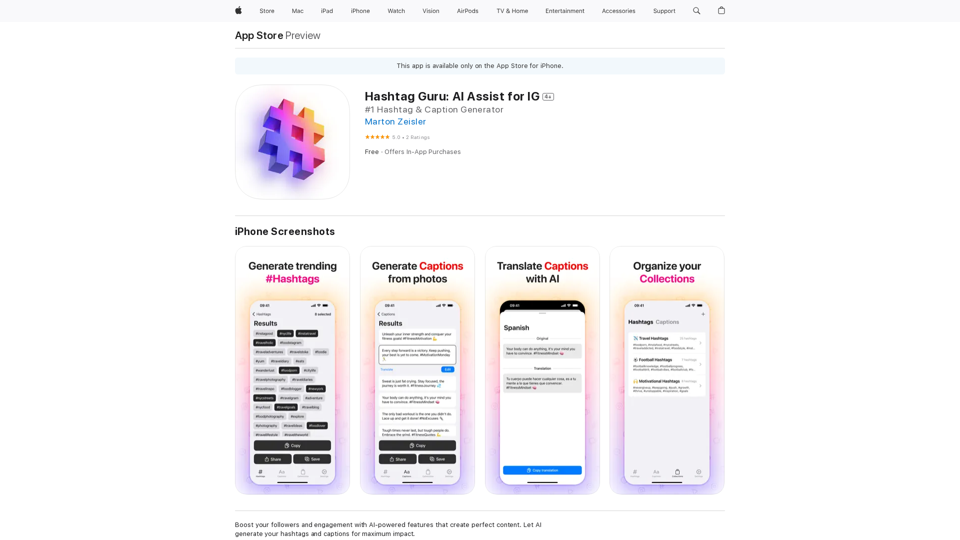
Hashtag Guru: AI Assistant for Instagram on the App Store
Hashtag Guru: AI Assistant for Instagram on the App StoreYour Ultimate AI-Powered Hashtag and Caption Generator! Unlock the secret to social media success with Hashtag Guru, the ultimate AI-driven hashtag generator and caption creator that helps you increase your online visibility, boost engagement, and grow your followers!
124.77 M

AutoCrawl - Download Amazon Designs This is a tool to help you download designs from Amazon product pages. Here's how it works: 1. Paste the Amazon product URL: Put the link to the Amazon product page you want to download designs from. 2. Select the design type: Choose the type of design you want to download (e.g., images, logos, patterns). 3. Click "Download": The tool will automatically extract and download the selected designs. Features: * Easy to use: Just paste the URL and click a button. * Multiple design types: Download images, logos, patterns, and more. * Fast and efficient: Quickly download multiple designs at once. Disclaimer: * Use this tool responsibly and ethically. * Respect copyright laws and only download designs for personal use.
AutoCrawl - Download Amazon Designs This is a tool to help you download designs from Amazon product pages. Here's how it works: 1. Paste the Amazon product URL: Put the link to the Amazon product page you want to download designs from. 2. Select the design type: Choose the type of design you want to download (e.g., images, logos, patterns). 3. Click "Download": The tool will automatically extract and download the selected designs. Features: * Easy to use: Just paste the URL and click a button. * Multiple design types: Download images, logos, patterns, and more. * Fast and efficient: Quickly download multiple designs at once. Disclaimer: * Use this tool responsibly and ethically. * Respect copyright laws and only download designs for personal use.Download Amazon's design templates, research products, and integrate them with MerchIntel.com.
193.90 M
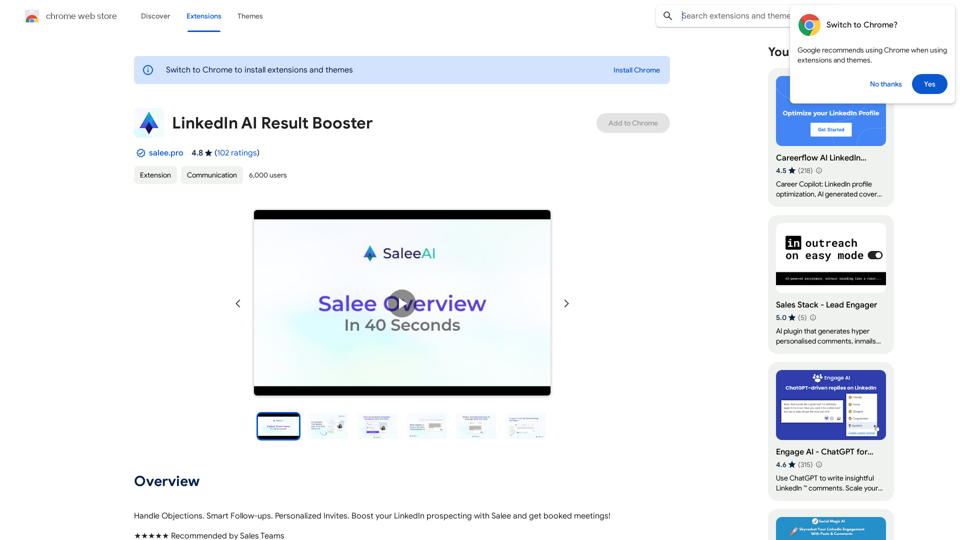
Handle Objections. Smart Follow-ups. Personalized Invites. Boost your LinkedIn prospecting with Salee and get booked meetings!
193.90 M
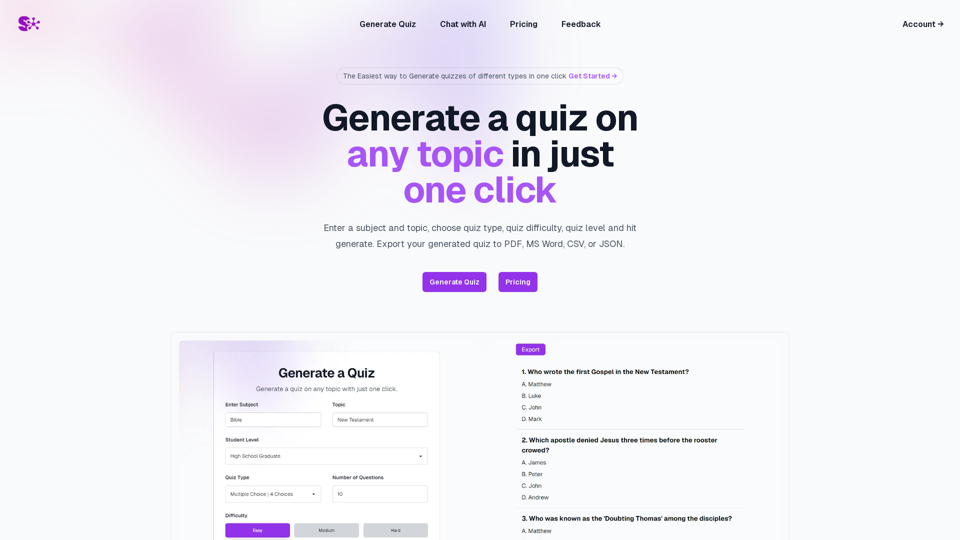
Quiz Generation Made Easy! ============================= With just one click, you can generate a quiz on any topic you want! Whether you're a teacher, student, or just a curious learner, this feature is perfect for you. How it Works --------------- 1. Choose Your Topic: Select the topic you want to generate a quiz on. It can be anything from history to science, literature to music, or even pop culture! 2. Click the Button: Simply click the "Generate Quiz" button, and our AI-powered algorithm will do the rest. 3. Get Your Quiz: In an instant, you'll receive a comprehensive quiz with multiple-choice questions, true/false questions, and short-answer questions. Features ------------ * Customizable: You can adjust the difficulty level, question type, and even add your own questions to make the quiz more personalized. * Instant Feedback: Get instant feedback on your answers, so you can track your progress and identify areas for improvement. * Shareable: Share your quiz with friends, classmates, or even on social media to spark a fun competition! Try it Out! -------------- Click the "Generate Quiz" button below to get started! [Generate Quiz Button] Happy quizzing!
0

